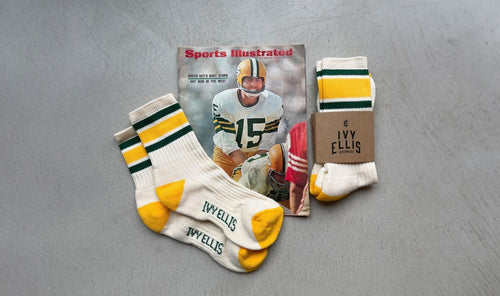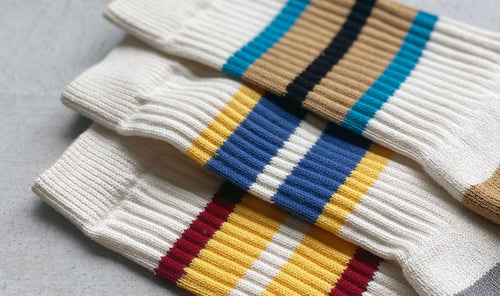The Ivy League and Varsity fashion styles are iconic, rooted in the traditions of prestigious American universities. These styles have evolved over the decades but remain timeless, representing a blend of sophistication, athleticism, and casual elegance. In this article, we'll explore the origins, history, and key elements of Ivy League and Varsity styles, and provide tips on how to incorporate these classic looks into your wardrobe.
Origins of Ivy League and Varsity Styles
The Ivy League style, often simply called "Ivy," originated in the early 20th century at the eight Ivy League colleges in the Northeastern United States. It represents a blend of traditional British tailoring and the casual, sporty attire favored by American students. The Varsity style, closely related, is inspired by collegiate athletic wear and the spirit of team sports, particularly those prevalent at Ivy League institutions.
How to Dress for the Ivy League
Key Elements of Ivy League Style
Dressing for the Ivy League involves incorporating classic, preppy pieces into your wardrobe. Here are some essential items:
- Blazers and Sport Coats: Opt for well-tailored blazers in navy, grey, or tweed. A classic navy blazer with gold buttons is a staple.
- Oxford Shirts: Button-down Oxford shirts in white, light blue, or striped patterns are a must.
- Chinos and Khakis: These versatile trousers in neutral colors like beige, khaki, and navy form the base of many Ivy outfits.
- Sweaters and Cardigans: Choose crew neck or V-neck sweaters, often layered over shirts, and cardigans in solid colors or classic patterns like argyle.
- Loafers and Brogues: Leather loafers, brogues, or boat shoes complete the look, adding a touch of sophistication.
What is the History of Ivy Style?
The Ivy style has its roots in the early 1900s when students at Ivy League colleges began adopting elements of traditional British fashion. This included tailored suits, blazers, and dress shirts. Over time, they incorporated more casual elements like polo shirts, sweaters, and khakis, creating a distinct American twist on classic menswear. The style gained widespread popularity in the 1950s and 60s, becoming synonymous with preppy, collegiate fashion.
For a deeper understanding of the history of Ivy style, consider reading the influential book "Take Ivy", which documents the fashion and lifestyle of Ivy League students in the 1960s through a Japanese lens.
What is the Ivy League Fashion Aesthetic?
The Ivy League fashion aesthetic is characterized by a clean, polished look that balances formality with casual elegance. Key features include:
- Tailored Fit: Clothing should be well-fitted but not overly tight. The silhouette is slim and flattering.
- Neutral Colors: The color palette is dominated by navy, grey, beige, and white, with occasional pops of color in accessories.
- Classic Patterns: Striped socks, plaids, and argyle are commonly used in shirts, sweaters, and ties.
- Quality Fabrics: Emphasis is placed on high-quality materials like wool, cotton, and linen.
What is the Difference Between Ivy Style and Preppy Style?
While Ivy style and preppy style share many similarities, there are some key differences:
- Origins: Ivy style originated from Ivy League colleges in the early 20th century, while preppy style evolved in the mid-20th century, influenced by the Ivy style but also incorporating more playful and colorful elements.
- Aesthetic: Ivy style is more formal and subdued, with a focus on traditional, timeless pieces. Preppy style is often brighter and more playful, incorporating bolder colors and patterns.
- Accessories: Preppy style includes more casual and whimsical accessories like boat shoes, tennis sweaters, and pastel-colored items.
How to Dress Like Ivy League
To dress like the Ivy League, focus on classic, well-made pieces that can be mixed and matched for various occasions. Here are some tips:
Invest in Quality Basics
Start with a foundation of quality basics like Oxford shirts, chinos, and blazers. These pieces form the backbone of Ivy League style and can be dressed up or down.
Layer Smartly
Layering is a key aspect of Ivy style. Pair a button-down shirt with a sweater and blazer, or a polo shirt with a cardigan. This adds depth and interest to your outfit while remaining polished.
Accessorize Thoughtfully
Choose accessories that complement your outfit without overpowering it. A classic watch, leather belt, and understated tie can enhance your look. Avoid overly flashy or trendy accessories.
Stick to a Neutral Palette
While you can incorporate some color, the base of your wardrobe should be neutral shades like navy, grey, beige, and white. This ensures your outfits remain versatile and timeless.
Explore our collection of men's crew socks to find the perfect complement to your Ivy League-inspired wardrobe.
Which Celebrity Has a Preppy Style?
Several celebrities have embraced the Ivy League and preppy styles, making these looks a part of their signature aesthetic. Here are a few notable examples:
Steve McQueen
Steve McQueen, often dubbed the "King of Cool," was known for his effortless Ivy League style. McQueen's wardrobe featured classic pieces like polo shirts, khakis, and sport coats. His look was a perfect blend of rugged masculinity and refined elegance, making him an enduring style icon.
Paul Newman
Paul Newman was another Hollywood legend who epitomized Ivy League style. Known for his sharp, classic looks, Newman often wore button-down shirts, blazers, and loafers, embodying the quintessential Ivy aesthetic. His timeless style continues to influence fashion today.
Ryan Reynolds
Modern-day actor Ryan Reynolds is known for his preppy style, frequently seen in well-tailored blazers, chinos, and loafers. Reynolds' fashion choices reflect a contemporary take on the Ivy League look, combining traditional elements with a modern twist.
Conclusion
The Ivy League and Varsity styles offer timeless fashion that balances tradition with modern elegance. By understanding the origins, key elements, and differences between Ivy and preppy styles, you can effortlessly incorporate these classic looks into your wardrobe. Whether you're dressing for a casual day out or a more formal occasion, the Ivy League aesthetic provides a versatile foundation for creating polished and sophisticated outfits.
For more inspiration and detailed documentation of Ivy League fashion, check out the book "Take Ivy", which offers a fascinating glimpse into the world of Ivy League style through the eyes of Japanese photographers in the 1960s.



